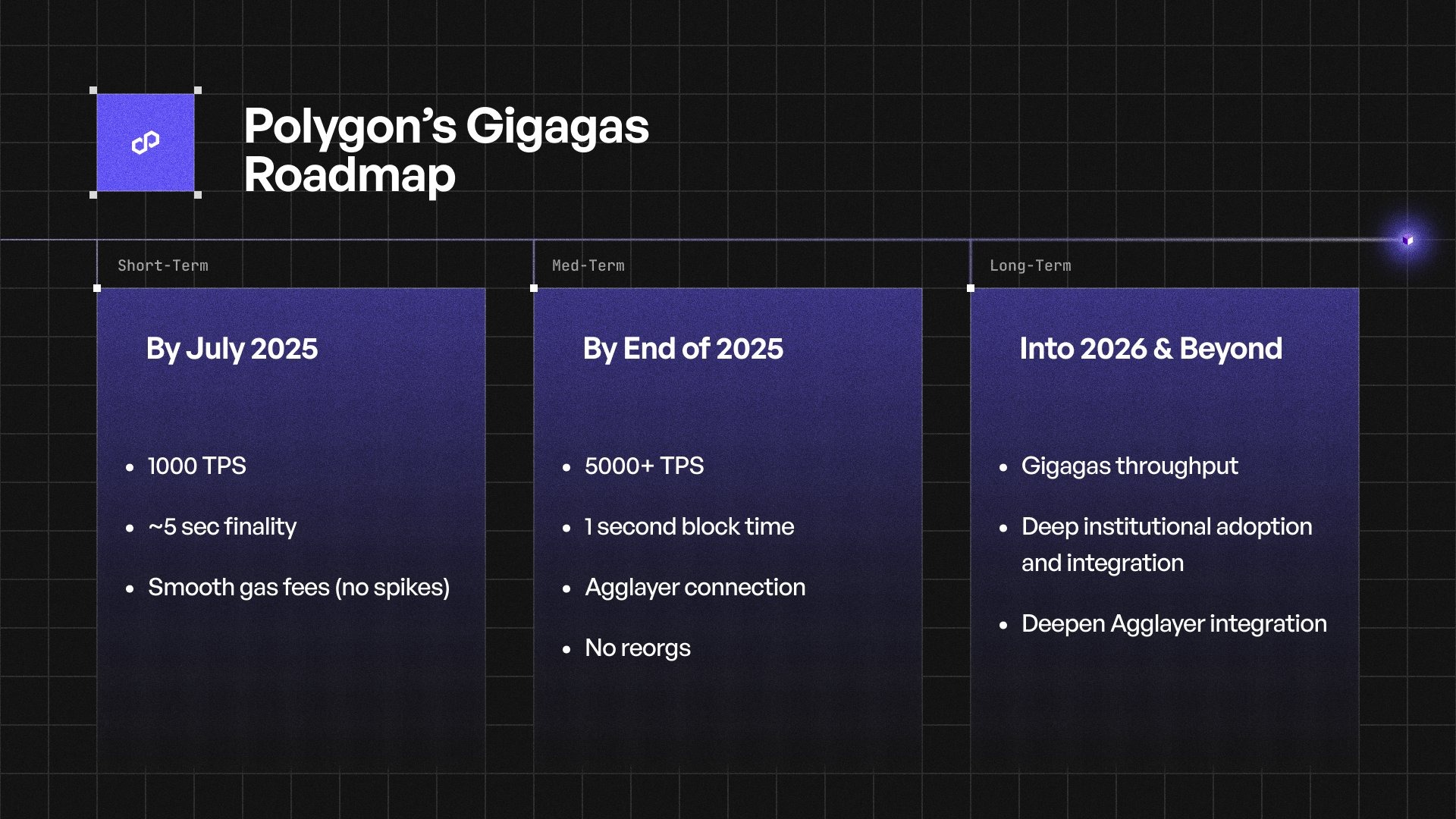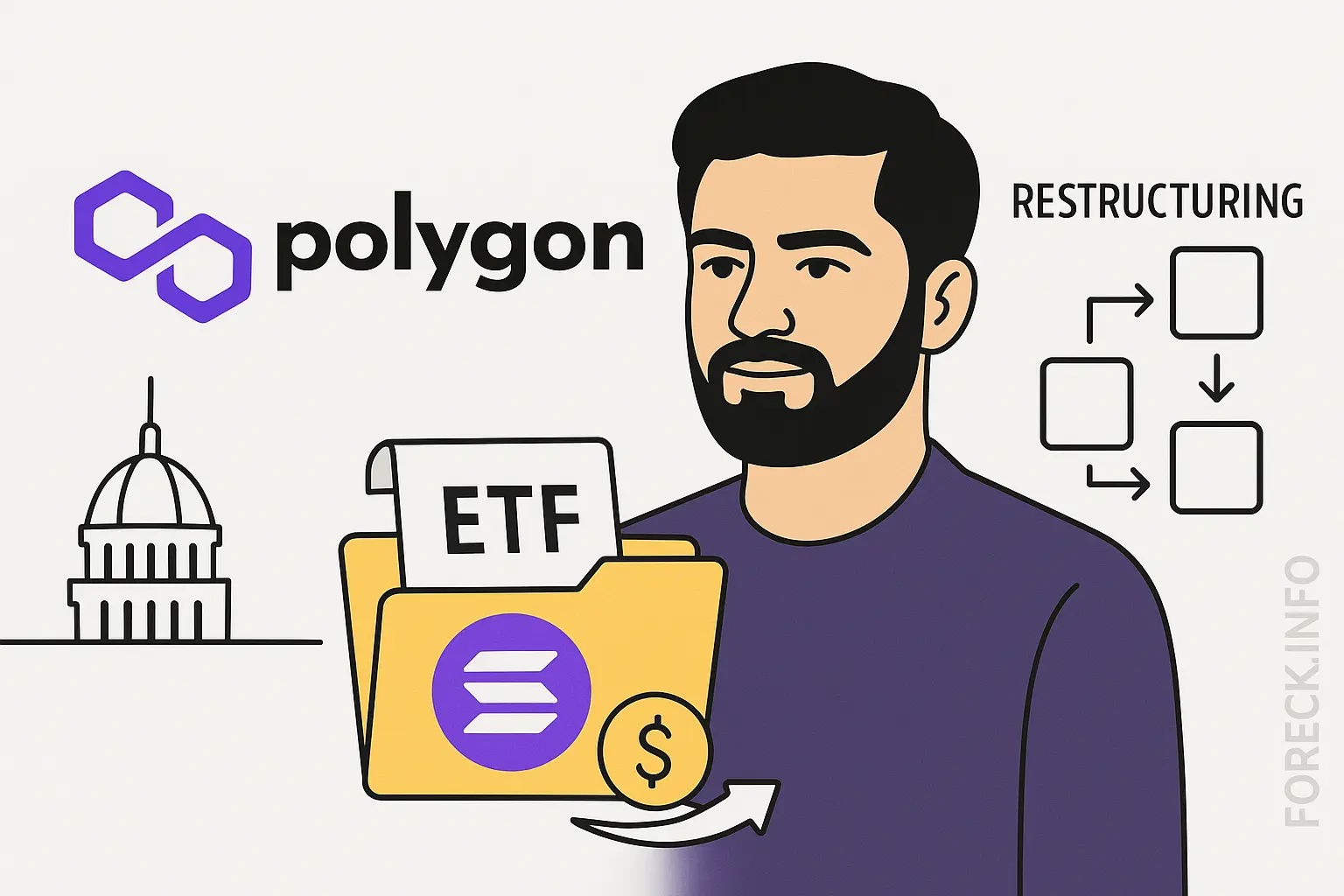This roadmap was introduced shortly after Sandeep Nailwal took the helm at Polygon Foundation. Nailwal confirmed that Polygon will prioritize Polygon PoS and Agglayer, with support for zkEVM set to be discontinued in 2026.
 Polygon’s Gigagas roadmap: stepwise scaling strategy. Source Polygon.
Polygon’s Gigagas roadmap: stepwise scaling strategy. Source Polygon. Bhilai, successfully deployed on the Amoy testnet, marks the initial milestone. The upgrade is expected to boost Polygon PoS throughput to 1,000 TPS, slash transaction finality times from 60–90 seconds to just five seconds, and stabilize gas fees. This phase lays the groundwork for Polygon’s next scaling leaps.
By October, developers aim to hit 5,000 TPS and achieve one-second finality. The integration of the Agglayer layer is set to enable seamless cross-chain liquidity, a crucial building block for broader institutional adoption and real-world asset (RWA) tokenization.
The strategic goal: position Polygon PoS as the leading settlement network for stablecoin payments and RWA tokenization, ultimately hitting the 100,000 TPS mark. Recent data show that stablecoin capitalization on Polygon PoS has surpassed $2.5 billion—reaching $2.64 billion at the time of writing, per Dune Analytics. The network has also witnessed an influx of institutional actors and large-scale enterprise integrations, fueling optimism for further adoption.
According to Q1 2025 data, Polygon PoS ranks fifth among all blockchains by RWA capitalization. To reach 5,000 TPS, Polygon will implement the VEBloP model, which optimizes block production and eliminates the risk of network reorganizations—an essential prerequisite for institutional-grade product launches.
Polygon’s development arc is clear: solving today’s network bottlenecks is just the beginning. The team envisions Polygon as the open, borderless economic infrastructure for millions of daily users, with seamless support for stablecoins, tokenized assets, and institutional capital flows.

